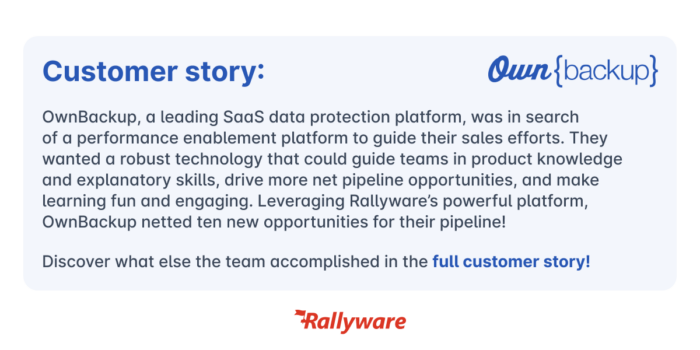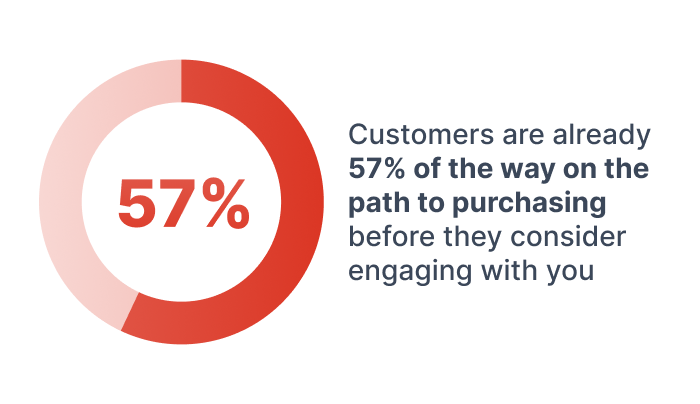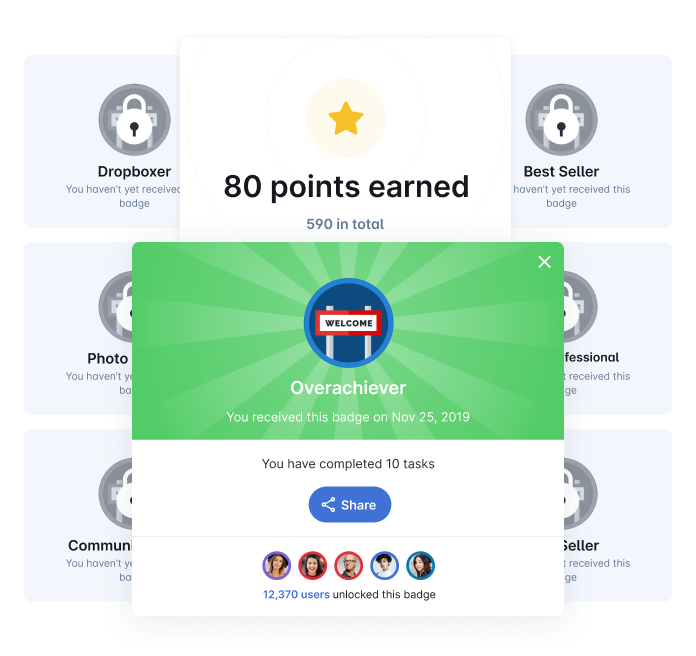3 Ways to Reduce Distributor Time-to-Sale
Top 5 Sales Enablement Metrics to Measure in 2024
Sales enablement is a core priority for almost any business. Whether you manufacture items, provide a service, or sell goods through retail, it’s incumbent on you to use every means at your disposal to enable the best possible sales results. Bottom line, sales are probably at the heart of what you do.
Yet sales has changed; and continues to change. As Gartner concludes, because of the COVID-19 pandemic, 23% of CSOs plan to shift field sales roles to virtual sales roles. The nature of the sales function is transforming before our eyes. That underlines the role of digitalization in sales. After all, if sales has become more virtual, then the technology that companies use matters like never before – and in different ways than it previously might have.
Of course, a large part of sales enablement is the metrics that get measured by technology. If you’re optimizing for the right metrics, you can alter the structures, operations, and methodologies your sales force uses to drive results. If you’re optimizing for faulty metrics, you’re going after the wrong prize. Let’s consider some sales enablement metrics that matter most today, and will continue to matter as we head into 2024. This list will be helpful for anyone looking to get the most out of their technology in the next several quarters and beyond.
What Is Sales Enablement?
Sales enablement is the process of unlocking a sales force’s potential using onboarding, training, productivity, and other performance-oriented tools. Sales enablement also involves isolating the most productive and proficient members of the sales force and improving their capabilities, creating a default “leader” class of sales professional for the organization. So without further ado, what kinds of metrics should you measure for sales enablement, and how do you measure them?
1. Time to Complete Onboarding
According to federal data, more than 50 million workers quit their jobs in 2022, which was the ‘real year of the Great Resignation,’ said one economist. Though these numbers are starting to stabilize a year later, retention of the workforce is still a problem for which organizations must solve.
Whether you’re in direct selling or retail, which has its own retention issues, this is a problem. If you can speed-up onboarding for the workforce, the chances are higher that folks actually start selling, and stay on for longer. You don’t want people to be mired in long onboarding processes. Yet you can’t start doing anything if you’re not measuring onboarding times and making changes in response to data.
The worst approach to take is: “This is how we’re going to do it, regardless of the data. This is how we’ve always done it as a company and we will continue to do it this way.” That’s not how things work here in 2023. It’s a more flexible, dynamic economy than ever, one that’s unpredictable and uncertain, and you need to respond in kind.
Recommendation: Throughout 2024, measure how long it takes your sales force to complete the onboarding process. Whatever vertical you’re in – e.g., insurance – it’s helpful to know how long the workforce takes to reach the active sales lifecycle. Sales reps who complete onboarding most quickly are more likely to dwell in the upper tier of productivity once they start closing deals.
This metric also shows you how much you should, or shouldn’t, worry about Great Resignation-like dynamics. If as a rule, people are completing onboarding quickly, that’s a positive dynamic as far as retention goes.

2. Content Opens
According to Gartner’s analyst research into sales enablement (already quoted above), customers are already 57% of the way on the path to purchasing before they consider engaging with you.

Content marketing, even just including brochures or guides in sales outreach, can help guide prospects down that purchase path. And as sales and marketing become more and more intertwined in normal business structures – as silos break down – sales ops via content marketing only grow in importance.
Remember, content is king. And of course it can’t just be any content, it has to be the right content. But you have to find some way to test it. Otherwise you’re “throwing good money after bad.” You’re doing the same thing repeatedly and expecting different results.
That’s not good.
Our Recommendation: Make sure you’re tracking content open rates for the sales force in 2024. Sales should be using content developed by marketing, but such content isn’t useful if it isn’t getting opened. Content opens can show you roughly how engaged customers are in the purchase path – and can show you how well performing your marketing content is. Monitoring this sales enablement metric allows you to fine-tune both marketing and sales operations.
3. Time to First Sale
Let’s face it – workers and sales force members are more distracted than ever. Between the pandemic, economic turmoil, and political uncertainty, folks just don’t have the attention span to focus on needlessly complex tasks.
The question here is one of engagement as well as ease of use. The two are intertwined. The easier to use the platform is, the more engaged the sales force will be. Conversely, the more engaged the sales force is, the easier they find it to be productive. And ultimately, the quicker they move through onboarding and training and start selling.
What you don’t want is to get the workforce bogged down in trainings that aren’t relevant to them because of their skill levels. Instead, you want learning and training content that meets them where they are. That’s going to help them progress faster to their goals and start selling, which is your goal.
Our Recommendation: Your sales enablement technology should be making it simpler to perform sales activities, not more difficult. If the average time to first sale is growing longer over time, you might want to question whether your technology is truly easy to use. At a time of increasing digitalization of the sales force, this is a key metric to measure.
4. Amount of Training and Learning Consumed; Time Spent
One of the benefits of a digital platform is that you can automate product training and learning. Because any sales rep has to speak knowledgeably about their products, this will be a key metric to track for many companies.
That’s particularly true for sales forces that work on an ad-hoc and voluntary basis – why? Companies that rely on such workforces have to be sure they’re engaged and articulate about their products. Revenue depends on it. Direct selling and the gig economy are a great example of that. So is retail, which requires dedicated, educated frontline workers.
However, training and learning alone, in isolation, aren’t going to be worth much in terms of business outcomes. The million-dollar question (often literally) is whether that training and learning gets translated into performance results. Consider investing in technology that actively connects training and learning consumption with incentives to perform, and rewards for performance. Rallyware’s performance enablement suite is one such tech platform. Because all your sales enablement tools are contained in one platform, the results from training and learning inform, and force-multiply, incentives to perform.
For example, completing learning activities might lead to points earned, which might then lead to greater incentives to perform when the individual has only X points left to win a prize for the week.

Our Recommendation: Consider tracking the amount of training and learning modules completed by sales reps. Additionally, go ahead and track the time spent on such modules, so you know whether it’s time to make your training and learning content simpler. These metrics will show you how effective your sales enablement technology is in keeping the sales force educated – no doubt the bread and butter of any successful sales operation.
5. Prospect-to-Customer Conversion Rate
This is in many ways a “classic” metric for sales enablement, but it’s crucial that in a year that portends a recession, you make it a priority to track. Make sure your sales enablement technology has robust enough data analytics for you to figure out what’s going on with this ratio and account for your results.
In some ways, it’s never been more important – since the pandemic began – to track prospect-to-customer conversions. We’re living in a time of retrenchment and increased competition for customer attention. Additionally, you might consider trying to track how your conversion rates compare to competitors.
The bottom line is that this is your bottom line. You have to convert prospects into customers. But how you get there is another question. Different companies in different industries will have different roadblocks. There’s no one-size-fits-all approach, and what worked in 2022 might not work in 2023 and 2024. You have to learn to adapt, and the most informed way of drawing lessons comes from hard data.
Our Recommendation: Find new and more data-rich ways to track the prospect-to-customer conversion rate. This might involve acquiring platforms that have opportunity management systems connected directly to learning and development systems. That way, you can see how L&D numbers affect opportunities/sales.
In any case, think about being more creative about tracking conversion rates in as granular a way as possible. Consider soliciting thoughts on this from internal data analysts, if you have any, or your technology provider’s data analytics team.
Rallyware’s sales enablement tools help you not only track the right metrics, but optimize for the highest possible results. Request your demo of the market-leading performance enablement platform today!
News and Insights on Workforce Training & Engagement
We’re among top-notch eLearning and business engagement platforms recognized for effective training and talent development, helping to empower distributed workforces
Subscribe
